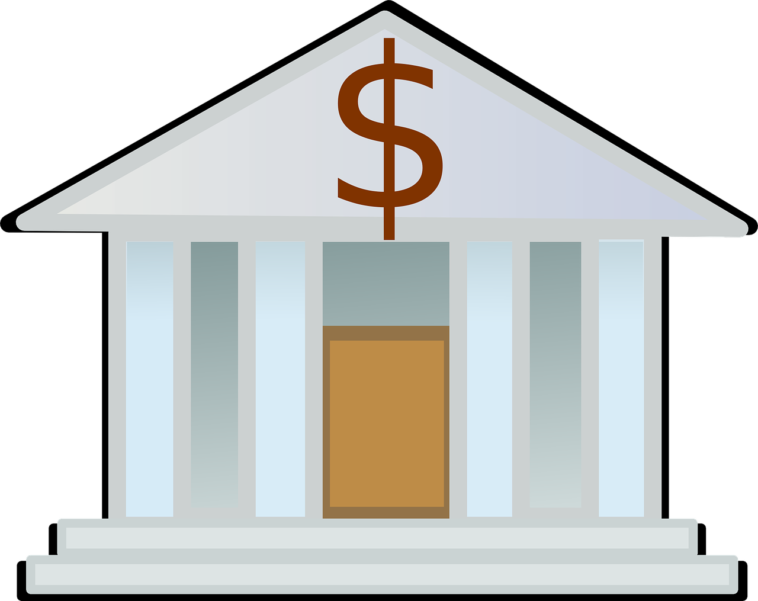
Contents
- 1 You Can Find It In This Article
- 2 Understanding Exchange Traded Products
- 3 Exchange-Traded Funds Overview
- 4 Comparison of ETPs vs ETFs – Similarities and differences
- 5 ETPs: Structure and Function
- 6 What is the Structure of an ETF?
- 7 Liquidity, Trading Volume
- 8 The Cost of a Project: Fees and Expenses
- 9 The Tax Efficiency of the Economy and its Implications
- 10 Risk factors and investment strategies
- 11 Market impact and performance tracking
- 12 Investor considerations when choosing between ETPs and ETFs
- 13 FAQs
- 13.1 What is the difference between ETPs (exchange traded products) and ETFs?
- 13.2 What is the difference between ETFs and mutual funds?
- 13.3 How do ETPs compare with ETFs in terms of the assets they track?
- 13.4 ETPs can be a great investment alongside stocks.
- 13.5 What is the difference between ETPs and ETFs that are focused on Bitcoin in terms of cryptocurrency?
- 13.6 How do Exchange Traded Notes relate to ETPs, ETFs, and ETPs?
You Can Find It In This Article
Exchange-Traded Notes (ETNs)Exchange-Traded Commodities (ETCs)Physical ETFsSynthetic ETFsWhat are the key distinctions between ETPs and ETFs in the financial market?How do ETPs, ETFs, and Mutual Funds compare in terms of investment structure?What types of assets do ETPs typically track, and how does that compare to ETFs?Can ETPs be considered a good investment option alongside stocks?In terms of cryptocurrency, how do ETPs differ from ETFs focused on Bitcoin?What are Exchange Traded Notes (ETNs), and how do they relate to ETPs and ETFs?
Understanding the difference between Exchange-Traded Products and Exchange-Traded Funds is important when it comes to stock investing. ETPs, like ETFs, are both traded on stock markets and provide pooled investment. ETPs are able to encompass more assets than ETFs, including commodities, currencies, stocks and bonds.
ETFs offer investors a simple way to get exposure to different sectors. ETPs offer greater flexibility, as they allow for more investment options. Investors who want to diversify beyond index funds can find this flexibility appealing.
ETPs, like ETFs, allow you to trade shares at any time during the day. This is unlike mutual funds which are only priced after the close of the market. Knowing the differences and applications of ETPs and ETFs can allow investors to make better decisions, and customize their investment portfolios according to their financial goals.
Understanding Exchange Traded Products
Exchange-Traded Products are instruments of investment that are traded at stock exchanges. Investors can gain exposure to many different assets. Stocks, bonds, commodities or indexes can be included.
ETPs are available in different types:
-
Exchange-Traded Funds: Investments that are pooled and track a underlying index.
-
Exchange-Traded Notes: Debt securities that are not secured by financial institutions.
-
Exchange-Traded Commodities: These commodities provide exposure to commodity futures and indices.
ETPs offer the best of both worlds: the diversification of mutual funds and the convenience of trading stocks. Investors can trade at the market price throughout the day.
The key characteristic is liquidity. Investors have flexibility because shares can be traded just like stocks. ETPs are therefore suitable for many investment strategies including intraday trading, long-term investing and holding.
Another important feature is transparency. Many ETPs disclose their holdings daily so that investors can see what they actually own.
ETPs come with a number of risk factors. They include credit, liquidity, and market risks (for ETNs). The cost of an ETP can differ depending on its type.
ETPs are a way of investing that is both diversified and easily accessible. Both individual investors and institutions can benefit from this versatile, yet simple investment tool.
Exchange-Traded Funds Overview
Exchange-Traded Funds are similar to stocks in that they’re investment funds which can be traded at stock exchanges.
These are a group of different assets such as bonds, stocks or commodities. ETFs are a good way to diversify your investment. They often track an index or a sector.
The Key Characteristics Of ETFs
-
Investors are able to buy and sell ETFs at the market price throughout the day.
-
Diversification: An ETF provides exposure to many securities in a single transaction.
-
ETFs have generally lower fees than mutual funds.
-
The holdings of ETFs is usually reported daily.
ETFs can track a variety of different indices, including
-
Indexes of the market (e.g. S&P 500).
-
Sector-specific indices (e.g., Technology, Healthcare)
-
Commodity Indices (i.e. Gold, Oil, etc.)
The ETFs are broadly categorized into:
-
Stock ETFs represent ownership of a grouping of shares.
-
Bond ETFs are composed of government bonds, corporate bonds, and municipal bond issues.
-
Commodity ETFs track physical commodities such as gold, oil, and silver.
ETFs are a combination of stocks and mutual funds. ETFs provide diversification without the restrictions of only trading at the end the day.
ETFs are useful for a variety of strategies. Investors may use them to hedge or take advantage of market inefficiencies. Due to their structure, they can be tax efficient compared with mutual funds.
Comparison of ETPs vs ETFs – Similarities and differences
Exchange-Traded Products and Exchange-Traded Funds have many similarities, but they also differ in some important ways.
Similarities:
-
ETPs and ETFs can be traded at stock exchanges.
-
Intraday trading: During the hours of trading, investors can purchase and sell ETFs or ETPs at current market price.
-
Transparency: These companies are often transparent about their investments and performance metrics.
Differences:
-
Legal Structure ETFs fall under the ETP category. ETPs are a broad category which includes ETFs and exchange traded notes (ETNs).
-
ETFs offer greater liquidity because of their wider market appeal and larger trading volume. It is easier to take and leave positions.
-
ETFs have lower fees than other ETPs. They can be more affordable for investors who are looking to invest long term.
Liquidity Mechanism
-
ETFs use an authorized participant creation and redemption system, which maintains liquidity. The share today’s viral level= snow is kept close to its net asset value.
-
This mechanism may not be available in ETNs or other ETPs that are nonfunds, and this can affect their Where to Buy liquidity.
Risk Factors:
-
ETFs are generally based on an index, or a basket of assets. They can have a lower level of risk than other ETPs.
-
ETNs are another ETP. They’re unsecured obligations that carry a credit risk.
ETPs: Structure and Function
Exchange-Traded Products are divided into three types: Exchange-Traded Funds, Exchange-Traded Notes and Exchange Traded Commodities. Each has its own characteristics and structure.
Exchange-Traded Notes are debt securities that have no security backing. They’re issued by banks and financial institutions. These notes are intended to mimic the performance of an index, minus investor fees. ETNs are not ETFs because they do own their underlying assets. The issuer is instead committed to pay the return on the benchmark index.
Investors in ETNs may lose money if the issuer fails. ETNs are not physical assets, but they do offer a precise index performance because tracking is avoided.
Investors can access ETNs that focus on niche markets and hard to reach areas. Consider the credit risk of issuing institutions.
Exchange-Traded Commodities are investments that follow the performance of commodity indexes, as well as the “Today’s Viral level= Violet” of specific commodities such oil, gold or agricultural products. These ETCs are a simple way to invest directly in commodities without having to deal with the physical or futures market.
ETCs are available with a physical backing or synthetically. ETCs that are physically backed store the commodity, which provides a tangible base. ETCs that are synthetically replicable use financial instruments such as swaps to simulate commodity price movements.
ETC investors benefit from the daily liquidity of ETCs and their transparent pricing. Roll yields and contango can have a negative impact on returns. For those who are considering ETCs with physical backing, it is important to properly assess fees and storage costs.
What is the Structure of an ETF?
The two main types of exchange-traded fund (ETF) are physical ETFs, and synthetic ETFs. The two types have distinct features that are attractive to investors with different investment goals or risk tolerance.
The portfolio that Physical ETFs have is a physical replica of the index. The fund holds and buys the securities which make up the index.
Direct holdings of these ETFs often result in lower tracking error.
They may prefer physical ETFs because of their simplicity and transparency. They are more predictable because they have tangible assets. They are also subject to regulation, which adds another layer of safety.
In contrast, synthetic ETFs do not own the assets that make up the index. They use derivatives and swaps instead to mimic the index’s performance.
It can provide advantages like lower costs or access to markets which may not be easy to invest directly.
The performance of synthetic ETFs is mirrored by contractual agreements, which allows them to provide a more accurate tracking. This type of ETF can carry counterparty risks, as their performance is dependent on the financial strength of derivative issuers.
Investors who are looking for a cost-effective solution and a broader exposure to the market will benefit from these ETFs.
Liquidity, Trading Volume
Comparing exchange traded products (ETPs), and exchange traded funds (ETFs), it is important to take into account the liquidity and volume of trading.
The liquidity of an asset is the ease with which it can be purchased or sold on the market, without its price being affected. ETFs are more liquid due to the broader appeal of their market and greater trading volume. Investors can trade shares with little or no price impact thanks to the higher liquidity.
The trading volume represents the total number of shares that have been traded in a given period. A higher trading volume usually indicates better liquidity as more buyers and seller are present in the market. ETFs like SPDR S&P500 ETF have higher trading volume than less popular ETPs.
Liquidity is also affected by the size of the funds. Liquidity is often higher in larger funds because of the increased trading and investment activity. A major ETF, for example, will have smaller bid-ask Spreads, and a less volatile Where To Buy when trading, as compared to an ETP that is less popular.
Fees are also important to consider for investors. ETFs have typically lower fees than other ETPs. This can appeal to long-term investors who are looking for cost efficiency.
Understanding the trading volume and liquidity of ETPs, and ETFs in general is essential for informed investing decisions. In general, ETFs with higher liquidity and volume of trading offer greater flexibility and transaction ease.
The Cost of a Project: Fees and Expenses
Understanding fees and costs is important when comparing Exchange-Traded Products and Exchange-Traded Funds. They often have lower expenses than actively-managed mutual funds.
The expense ratio is the annual fee that ETPs or ETFs charge to investors in order to cover their operating costs. ETFs typically have lower expense rates than other ETPs.
Commission fees: Certain brokerage firms charge a commission fee when purchasing or selling ETPs. Investors should take into account these fees when calculating their total investment cost.
The bid-ask spread is the difference in price between what a buyer will pay for Today’s VIRAL Level= Thistle and what a seller will accept. Narrower spreads are generally indicative of better liquidity and lower transaction costs. Increased daily trading volume often leads to narrower spreads between bid and ask, especially in ETFs.
ETFs tend to have lower costs, but it is important to consider other factors such as trading volume or spread impacts. The cost to maintain a particular investment can be affected by this.
The Tax Efficiency of the Economy and its Implications
Exchange-Traded Products and Exchange-Traded Funds differ from each other in terms of tax efficiency because they have different structures and trading methods. The tax implications of these distinctions are significant.
In general, ETFs have less “taxable events”, compared with mutual funds. The creation/redemption process allows for in-kind transfers. It reduces the requirement to sell the securities in the fund and minimizes capital gains.
In contrast, mutual funds must sell their holdings in order to redeem. The result is often realized capital gains that are then passed onto the investors.
ETPs such as Exchange-Traded Notes and Exchange-Traded Commodities can be subject to different tax rules. For example, ETNs are debt securities and could be subject to different rules than ETFs.
Important Points
-
ETFs: Create/Redeem in kind to delay capital gains until an investor sells his shares.
-
Redeeming mutual funds is a common taxable event.
-
ETNs are taxed differently because they are not equity but debt instruments.
ETFs held in a tax-deferred account result in generally lower taxes than mutual funds.
ETFs are a great option for those investors who want to optimize their tax savings while still maintaining flexibility in their portfolio.
Risk factors and investment strategies
Investors should be informed that both ETPs as well as ETFs have certain risks. Market risk refers to the possibility of loss due to fluctuations on the market.
ETFs have a different liquidity risk than other ETPs. The daily trading volume of ETFs is usually higher, making them more accessible to buyers and sellers.
Certain ETPs such as Exchange-Traded Notes are considered to be unsecured debt instruments.
The tax efficiency also varies. Due to the structure of ETFs, they are usually more tax efficient. This is because investors can defer their capital gains.
ETFs are a good investment for long-term hold and buy strategies. Those who want to invest in broad markets can use this.
Investors can also use ETPs with sector-specific strategies to get exposure to niche markets.
The key advantage of diversification is that it allows investors to spread their risk across different asset classes and sectors. ETFs, as well as ETPs, allow investors to spread their risk over a variety of asset classes and sectors.
Stop-loss order can be used to manage risks by selling the shares automatically when they reach an agreed upon target.
ETPs are also suited to advanced strategies such as leverage. Leverage involves borrowing money to boost potential returns, but it also increases risk.
It is important to understand the different fee structures. ETFs are typically cheaper than other ETPs.
Investors can achieve their financial objectives by leveraging the tools available and understanding how they work.
Market impact and performance tracking
Exchange-Traded Products and Exchange-Traded Funds both play an important role on the financial markets. Investors should consider their market impact as well as the way they track performance.
Market impact
ETPs as well as ETFs can be traded at stock exchanges. This allows for immediate price adjustments to reflect market conditions. The liquidity of the market allows quick buying and selling.
ETFs follow the performance a defined index. ETPs track many different assets including bonds and commodities.
Performance tracking
ETFs aim to mimic the performance of an index. An ETF that tracks the S&P 500, for example, will try to replicate the performance of the index.
ETPs can track indices, but they also have the ability to follow other financial instruments. ETPs can cater to different investment strategies because of their flexibility.
Investors can choose from a variety of investment options according to their risk appetite and specific goals.
Investor considerations when choosing between ETPs and ETFs
Investors should consider several factors when choosing between an Exchange-Traded Product and Exchange-Traded Fund.
ETFs offer greater liquidity because of their higher trading volume. It is easier to purchase and sell ETFs without affecting the Today’s VIRAL Level= Orange market significantly.
ETFs have typically lower fees than other ETPs. Reduced fees over time can increase overall returns.
ETFs are primarily focused on stocks, bonds and other traditional assets, while ETPs can offer exposure to currencies, commodities or niche markets. It is important to match the investment goal with your option.
ETNs and other ETPs may have a higher credit risk than ETFs.
Tax Efficiency ETFs are more efficient in terms of taxes due to the unique structure they have that reduces capital gain distributions.
Investors’ needs and goals vary, so it is important to carefully evaluate these factors. The success of your investment can be greatly impacted by making an informed decision. It is important to conduct a thorough analysis of your individual situation.
FAQs
What is the difference between ETPs (exchange traded products) and ETFs?
ETPs are a category of securities traded on the stock market, which includes ETFs. ETFs are ETPs that track indices and financial instruments. ETFs offer greater liquidity and lower costs than some ETPs.
What is the difference between ETFs and mutual funds?
ETPs, ETFs and other derivatives are traded like stock during trading hours. This allows for flexibility in buying and selling shares. Mutual funds, on the other hand, are only priced at the close of trading and don’t trade. ETFs have lower expenses than mutual funds because they are managed passively.
How do ETPs compare with ETFs in terms of the assets they track?
ETPs are able to track many different assets including currencies, commodities and indexes. ETFs are primarily focused on tracking stock or bond indices. Both ETPs as well as ETFs provide diversification. However, ETPs track a wider range of assets than traditional ETFs.
ETPs can be a great investment alongside stocks.
ETPs are a good way to complement stock investing. ETPs help spread risks by providing diversified exposure across different financial instruments and asset classes. They are a good choice for investors who want liquidity and flexibility.
What is the difference between ETPs and ETFs that are focused on Bitcoin in terms of cryptocurrency?
The performance of crypto-assets like Bitcoin is tracked by ETPs. They are traded at traditional stock exchanges. Bitcoin ETFs are a form of cryptocurrency ETP that aims to mimic the movements of Bitcoin. Their regulatory structure and their trading mechanisms are the key differences, and can impact their investment appeal and liquidity.
How do Exchange Traded Notes relate to ETPs, ETFs, and ETPs?
ETNs, another form of ETPs, are structured as debt securities that have been issued by financial institutions. ETNs are different from ETFs which track the performance without actually owning the asset. ETNs are subject to credit risk, which is associated with their issuer.



















Comments
Loading…